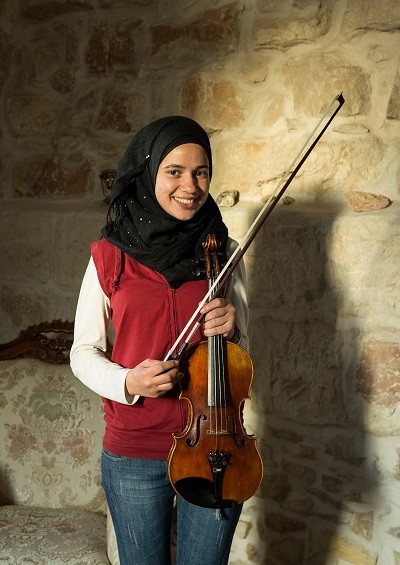Amidst the War, Find Music on the West Bank
Hidden within Palestine’s contested West Bank, one man brings joy through music to the local people.

Credit: David Brunetti/The Other Hundred
Takeaways
- Hidden within Palestine's contested West Bank, one man brings joy through music to the local people.
- Six photos illuminate a brighter side of the conflict-torn West Bank in Palestine.
- Despite the shadow of conflict with Israel, one man continues to ply his trade as a violin craftsman.
David Brunetti is a London-based photographer. His work centers on issues affecting identity in conflict and post-conflict situations.
His current project, “Looking for Palestine”, aims to challenge prevailing perceptions of Palestinians as either victims or perpetrators of the occupation of their land.
Shehada Shalalda is a violin maker in Ramallah, a town in Palestine’s West Bank area. Originally a student of the instrument at the city’s Al Kamandjati music school, after attending a class by a visiting violin maker he found himself becoming more interested in how violins were made and repaired than in playing them.
After shadowing several other violin makers who visited the school, he was invited to join a workshop in Italy and then went to study violin-making and repair in the United Kingdom. He gave the first violin he made in Italy to his younger sister, Ala, who has been learning the instrument ever since.
Today, Shehada works full-time making violins for students at Al Kamandjati, working from a workshop in his home beside the school.
Text and photographs by David Brunetti
 David Brunetti is a London-based photographer. His work centers on issues affecting identity in conflict and post-conflict situations. His current project, “Looking for Palestine”, aims to challenge prevailing perceptions of Palestinians as either victims or perpetrators of the occupation of their land.
David Brunetti is a London-based photographer. His work centers on issues affecting identity in conflict and post-conflict situations. His current project, “Looking for Palestine”, aims to challenge prevailing perceptions of Palestinians as either victims or perpetrators of the occupation of their land.The Other Hundred is a unique photo-book project aimed telling the stories of people around the world who are not rich but who deserve to be celebrated.
The Other Hundred Entrepreneurs: 100 Faces, Places, Stories — the second volume in The Other Hundred series — focuses on the world’s everyday entrepreneurs. It captures the reality that small and medium-sized businesses, rather than tech billionaires or elite MBAs, contribute the majority of the world’s jobs, including half of all jobs in Africa and two-thirds in Asia.
The book offers an alternative to the view that most successful entrepreneurs were trained at elite business schools. Here are people who have never written a formal business plan, hired an investment bank, planned an exit strategy or dreamt of a stock market floatation. Some work for themselves, others employ a few people, still others a few hundred.
 The book’s 100 stories were chosen from a pool of 10,000 images shot in nearly 150 countries. The book is published by Oneworld Publications in London and is available in bookstores worldwide and online.
The book’s 100 stories were chosen from a pool of 10,000 images shot in nearly 150 countries. The book is published by Oneworld Publications in London and is available in bookstores worldwide and online.
































